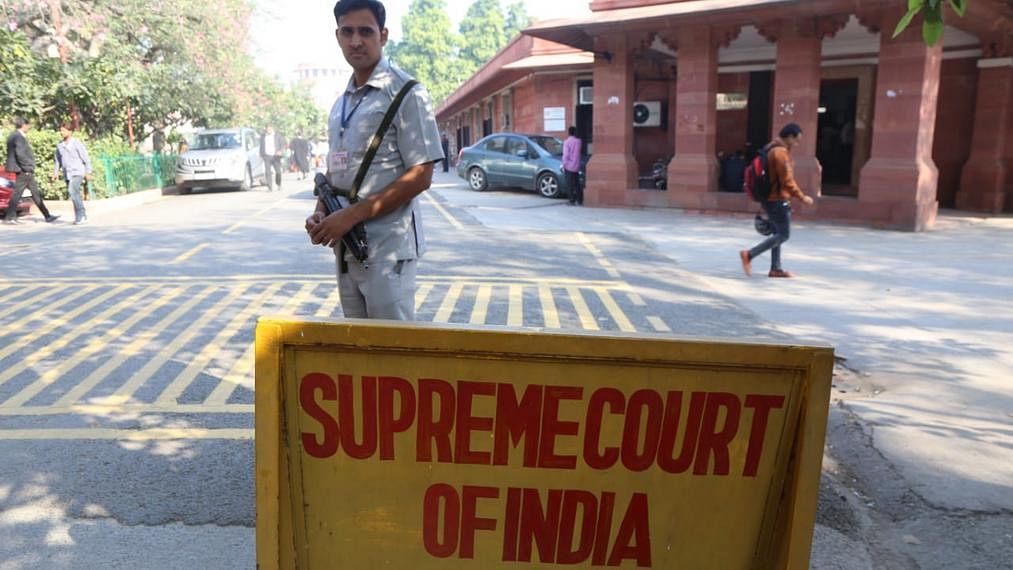New Delhi: No scope for squatters rights, the Muslim side’s failure to prove the Babri Masjid was built on the ruins of an Islamic structure, the fact that only a portion of the site was used for prayers, and an over 300-year period when namaz was not offered at the Ram Janmabhoomi site.
These were the four grounds cited by the Supreme Court as it paved the way for the construction of a Ram temple at the Ayodhya site that has been contested between Hindus and Muslims for decades.
Even though the Muslim side did not get the land, the Supreme Court acknowledged the wrongs inflicted on the community by the 1949 break-in and the 1992 demolition. It thus set aside a five-acre plot for the Sunni Central Waqf Board, the Muslim party whose claim to the site was acknowledged by the court.
The court said the “destruction of the mosque took place in breach of the order of status quo and an assurance given to this court”.
“The destruction of the mosque and the obliteration of the Islamic structure was an egregious violation of the rule of law,” it added.
Also Read: SC invoked Article 142 to order formation of trust for Ram Mandir. Here’s what it means
‘Suit of adverse possession’
One question that the bench had to answer was whether the board had gained title to the Ayodhya land by adverse possession.
In legal parlance, adverse possession is defined as a squatter gaining rights to a plot by occupying it continuously for a certain period.
The Muslim side argued that even if the mosque was built on temple ruins, as stated by the Hindu parties, they had adverse possession as the Babri Masjid had existed on the plot since the 16th century.
However, the SC rejected the claim and concurred with the Allahabad High Court’s 2010 ruling, which stated that there was no adverse possession as it was an open space where “anybody could have built anything” for prayers.
‘No Islamic structure under mosque’
An “afterthought” — that is how the Supreme court rejected the Sunni Central Waqf Board’s argument that the Babri Masjid was built above an Idgah, an Islamic structure where namaz prayers are offered.
The court cited a 2003 Archaeological Survey of India (ASI) report that clearly stated the structure underneath was “not an Islamic structure”, and the figures excavated from the site suggested the presence of a Hindu structure.
“The defence in regard to the existence of an Idgah beneath the mosque would postulate that the mosque was built on the foundation of a demolished Idgah,” the court stated. “Besides being a far-fetched hypothesis, the nature of the recoveries belied the claim. The Idgah defence was hence an afterthought, quite contrary to the pleadings of the Sunni Central Waqf Board.”
‘Entire property not utilised by Muslims’
The court analysed the 2.77-acre disputed site from the perspective of the outer courtyard, which hosted sites significant to Hindu deity Ram, and the inner courtyard, where the Babri Masjid stood.
In its verdict, the bench noted that the evidence submitted by the Muslim side did not establish the entire plot was used by Muslims for worship purposes.
The court accepted that that the “outer courtyard was in fact used by and was in the possession of the devotees of Lord Ram”, and that “portions of the property were admittedly not used for religious purposes by the members of the resident Muslim community”. Thus, the court ruled, the entire area could not be classified as “waqf”, which can be described as a property donated for Muslim religious and other purposes.
The court also pointed out its rejection of the Hindu side’s claim that the land, by virtue of being Ram’s birthplace, was a juristic entity.
The Muslim argument that the land qualifies as waqf would be a “mirror image” of the Hindus’ juristic entity argument, and hence stood rejected.
Also Read: Full text of Supreme Court judgment on Ayodhya title dispute case
‘No namaz in mosque from 1528 to 1856-7’
One of the primary characteristics of a mosque is that it hosts prayers. Sunni Central Waqf Board counsel Zafaryab jilani said the site still served as a mosque and prayers were offered there to this day.
However, the court noted that the Muslim side had presented “no account” to show possession, “use or offer of namaz in the mosque between the date of construction and 1856-7”.
It was only after the British constructed a wall outside the masjid to act as a railing that prayers started in the area, the court added.
“For a period of over 325 years which elapsed since the date of the construction of the mosque until the setting up of a grill-brick wall by the British, the Muslims have not adduced evidence to establish the exercise of possessory control over the disputed site,” the verdict reads.
However, the Hindus, the court said, continued worship at the disputed site in spite of the mosque. According to the court, the “identifiable places of offering worship by the Hindus included Sita Rasoi, Swargdwar and Bedi (cradle) symbolising the birth of Lord Ram in and around the disputed site, prevalence of the practice of worship by pilgrims at the disputed site including by parikrama (circumambulation) and the presence of large congregations of devotees on the occasion of religious festivals”.
Even after the brick wall was built, the court said, the Hindus continued to offer prayers while facing towards the three-domed structure (mosque), driven by the belief that the ‘garbha griha’, or the exact spot of Lord Ram’s birth, was inside the mosque.
Thus, the court states that even the inner courtyard was a part of the faith of Hindus.
Also Read: Beyond religion, there is an intellectual argument for a Ram Mandir at Ayodhya
